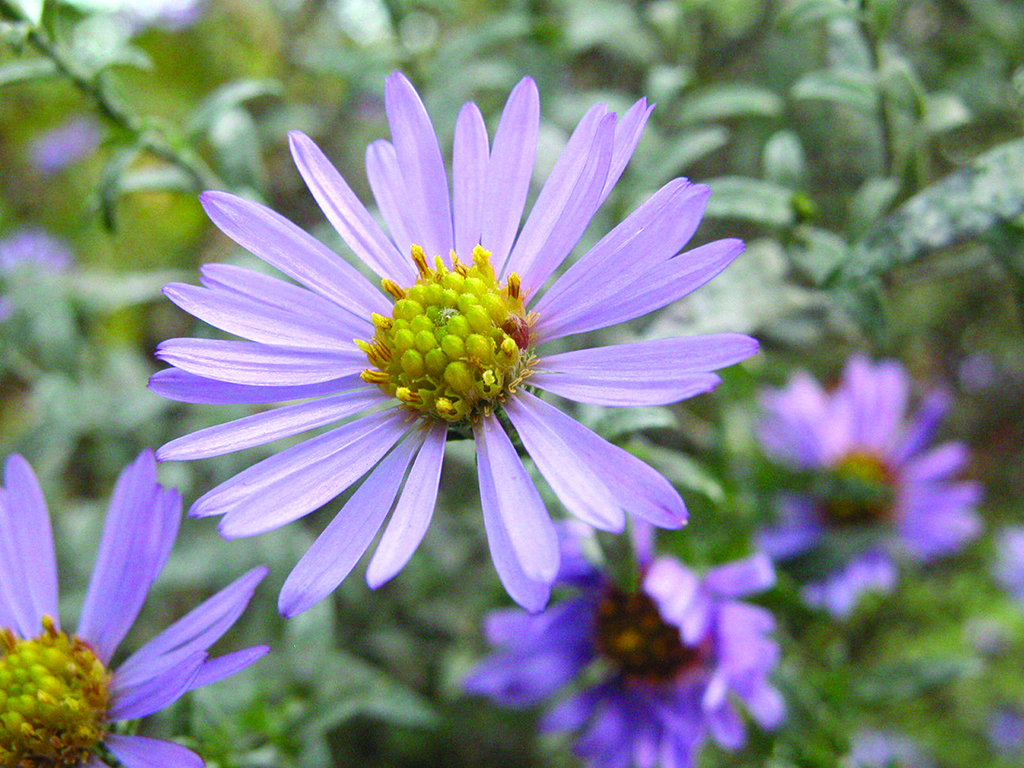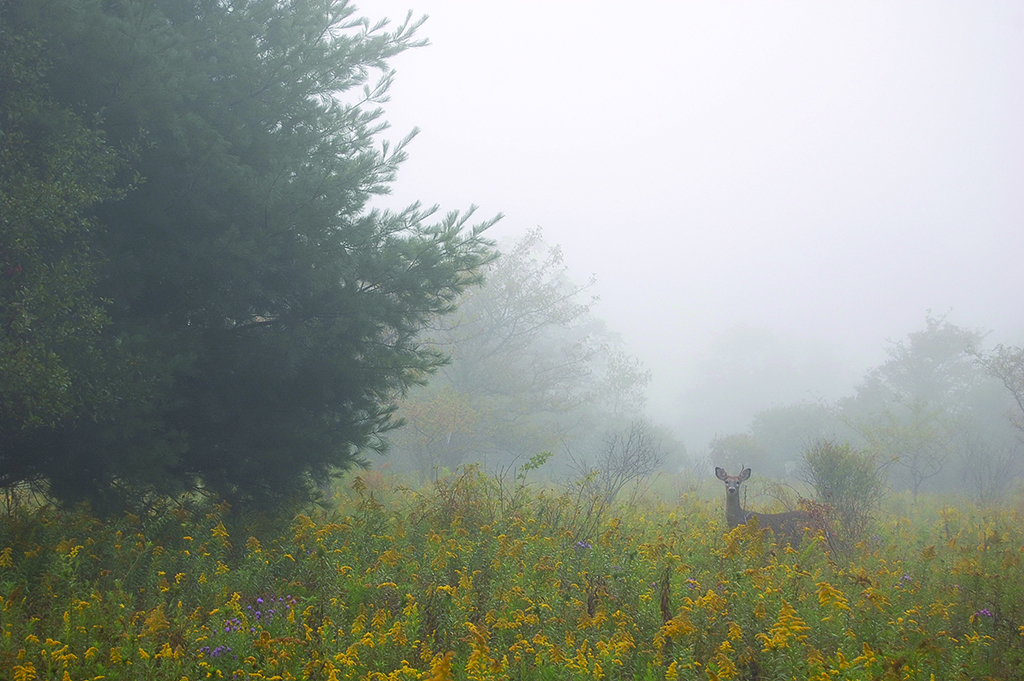Autumn Native Plants to Extend the Season

Written by Patrick Mulrooney
Back in April, we discussed some of the best early season native plants to grow around your garden that were visually stunning while also providing a habitat for wildlife. This article serves as a companion piece to the spring native plant article and will focus on those that come out to play in late summer.
One group of plants that easily goes unnoticed for most of the year is the asters. A large group containing over 600 species, the asters are vital for pollinators due to their late season production of nectar and pollen. As gardening plants, they offer a wall of color in white, pink, purples, and the often hard-to-find blue. They also come in a range of sizes, from compact to over 6 feet tall.
The New England aster, in its native form, is a little tall for most gardeners at 3-6 feet tall. The “purple dome” cultivar grows to 18 inches tall and begins flowering in June. Aster’s “wood pink” (Symphyotrichum dumosum) stays around the same height. For those who can devote a lot of space to this plant, check out “Fanny’s,” (Symphyotrichum oblongifolium), which is 3-4-feet tall and wide.
Research from the University of Delaware reports that asters are the wildflowers that support the most species of butterflies and moths. One of the reasons for their importance is because they offer nectar and pollen to insects near the end of the growing season, when pollinator resources are limited. A healthy stand of these flowers is many times the only thing that helps a bee colony supply itself with enough honey to survive one of our strange winters, when bees wake up to a balmy February but find no flowers in bloom.
Equally confusing to the bees is when the temperature plummets back down below freezing during the night. Honey is crucial for their survival during these ever-increasing temperature fluctuations. The aster benefits extend past the growing season and into winter, as its seeds feed birds and mammals, while other insects find shelter in the stems and stalks of the plant.

Aster sp. photo by Ioana Ionel.
An oft-forgotten member of this family is the goldenrod, another crucial native perennial for late summer pollinators. The flower resembles a panicle or corymb, but upon closer inspection, one can see it is made up of the classic daisy-shaped flower heads for which asters are known.
While there is variability among the over 100 species of goldenrod, most have a long bloom period. The common type in this area is Solidago rugosa, which can start blooming in late July and persist throughout September. Because of this, many beekeepers in the northeast depend on goldenrod as a late season food source for their colonies, reporting as much as 50-80 pounds of honey per colony. The sugar concentration in the nectar has been reported at 33%, placing it above many other native perennials. For those who do not have the garden space for the imposing native goldenrod, which grows between 3-6 feet, let me point you toward some more compact cultivars. “Little lemon,” “golden baby,” and “golden fleece” all stay shorter than 24 inches.

Goldenrod photo by Bill Kuhndeer.
As previously mentioned, the aster family is vast. There are several others worth mentioning for those who would like to help the butterflies during their fall southern migration route. Hardy ageratum or mistflower (Conoclinium coelestinum) is a blue flower that resembles the annual ageratum and will bloom throughout September and October. Blue is a rare color this time of year and makes a nice contrast against yellow, such as sneezeweed (Helenium autumnale). A good candidate for use in the back row is the 4-6-foot tall spotted Joe Pye weed (Eutrochium maculatum), which is a mighty producer of nectar, judging by the profusion of large swallowtail butterflies that seem to always be huddles around the flowers.
For late summer, asters are the best. They fill an enormous ecological role as butterflies rely on this group of plants during their fall migration and bees rely on them to supply their winter stores of honey. For gardeners, they are tolerant of clay soils, resistant to deer, and a valuable tool when it comes to extending color throughout the season. Just keep in mind that what is a year-long color display to us, is a year-long feast for pollinators. ML
Published in the September issue of Middleburg Life.


